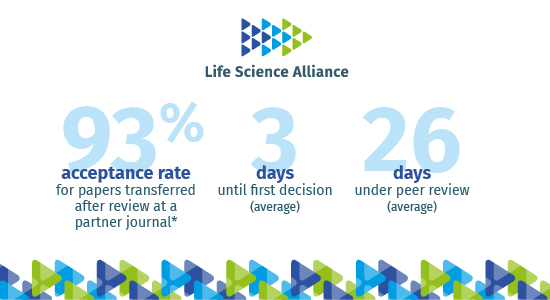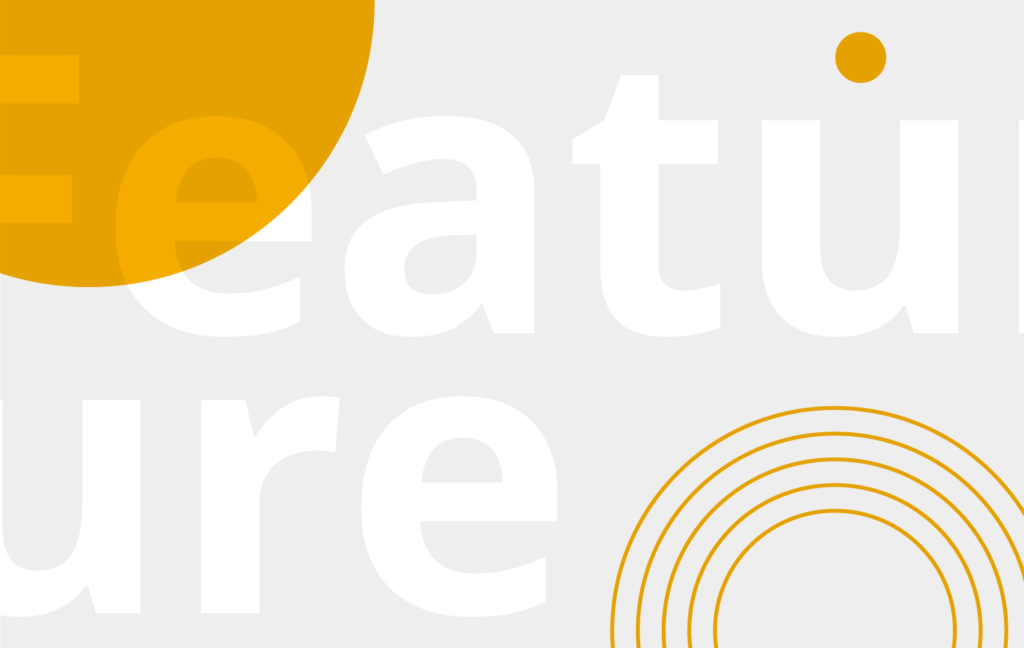19 July 2019 – LSA is a joint initiative of EMBO Press, Rockefeller University Press and Cold Spring Harbour Laboratory Press. It offers a venue for direct submissions and manuscripts transferred from partner journals. Manuscripts can be submitted to Life Science Alliance directly or by seamless transfer without reformatting from nine partner journals: The EMBO Journal, EMBO Reports, Molecular Systems Biology, EMBO Molecular Medicine, Journal of Cell Biology, Journal of Experimental Medicine, Journal of General Physiology, Genes & Development, and Genome Research. It provides space not only for conceptually novel studies, but also resources such as datasets, new methods and important confirmatory results, descriptive or negative data.

When Bart De Strooper, VIB, Leuven, Belgium, was invited to transfer his latest study on the role of inflammation in Alzheimer’s disease to LSA, he was initially sceptical – LSA had yet to release a single issue. But where De Strooper saw unfamiliarity, his student Iryna Voytyuk saw opportunity. “It was a nice story, but the original editors felt it was not really what they wanted to focus on, so they offered us the chance to publish in LSA,” says De Strooper whose group investigates basic mechanisms causing Alzheimer’s and Parkinson’s diseases. “I was not super enthusiastic at first, but Iryna was keen to have her work published and move on to a new position, and convinced me to give it a go.”
It saved us a year of work.
Bart De Strooper
Most important for De Strooper was that the journal offered high quality editorial and peer reviews. “Right from the start, my interactions with the editors were great,” he explains. “As the peer reviews on our initial submission were also transferred, we avoided having to go through the process once more – it has saved us around a year’s worth of additional work. Now Iryna has this great story, it’s all her own work, it’s published, people cite it, and she has moved onto an exciting new role. The transparency of LSA’s peer review process, in particular, is a very good way of creating openness, and having the mark of quality that comes from the journal’s partner organisations is very important – I think LSA has a great future.”
The peer review process at LSA mirrors the rigorous standards set by its partner journals – and for each potential transfer to LSA, there are often intensive consultations between editors of both journals. “We all want to advance science and this is a terrific example of how we can create a common venue that gives new options for direct submissions, or a second chance if it did not quite work out with one of our partner journals,” says Andrea Leibfried, LSA Executive Editor. “We know that getting rejected is associated with disappointment, but we are immediately providing an offer of how their paper might fit in LSA, which we hope they consider.”
Friendly, professional and helpful.
Sara Sigismund
In the past year and a half, Leibfried has been busy building the journal’s profile, addressing technical issues, and working on the ideas, questions and concerns of editors and authors. “Now the challenge is to encourage more researchers to make use of LSA, to make more offers for transfers, and to increase the proportion of authors who take up a transfer,” she says. “Often researchers might be preoccupied by impact factors – we are too new to rank in traditional metrics, but through our editorial process, and dedicated professional and academic editors and an academic editorial board spanning a broad range of areas, we are publishing research of explicit value for the different fields in the life sciences. We need to get the word out that LSA is a great venue that people can trust.”
Crucial to this is the personal approach taken by the journal’s team. “If I had a question, Andrea immediately replied,” says Sara Sigismund, University of Milan, who published a paper focussed on how endocytosis can regulate signals from a key cellular receptor. “The editors guided us through their expectations, highlighting the most relevant reviewer comments, we talked together before deciding on follow up experiments and they really improved the manuscript – in my experience it was very friendly, professional and helpful.”
While Sigismund’s paper was recognised as technically excellent, because it described a function in vivo that had previously been characterised in vitro, the paper was recommended for transfer to LSA. “It is very hard to find a completely novel story,” says Sigismund, whose work is focussed on how cancer cells bypass the cellular safety checks meant to stop them. “Sometimes it is important to revisit mechanisms in processes that are already known, but the hardest thing is to identify good stories that are an advance in the field. Sometimes scientists are forced to render things more novel or only follow trendy directions.”
Challenging this is another goal for LSA, Leibfried explains. “Our emphasis is on publishing findings that are valuable to the field,” she says. “It does not mean that something needs to provide a big conceptual advance, or be hugely novel – a small step can be very important. Ultimately, we want to establish if the paper is a good fit for our audience – if the novelty factor is fairly low, we interact with the community to understand if the finding is of significant value to the field.”
“The interactions with authors is what I like best,” Leibfried continues. “Authors can often clarify why an issue raised during peer review is not really such a big problem, or highlight the technical challenges associated with addressing it, making the portable peer review process interactive and collaborative. LSA is a new journal, competing with so many other journals, but I am tremendously proud of our content and what we have achieved so far, and excited about where we are heading in the future.”



